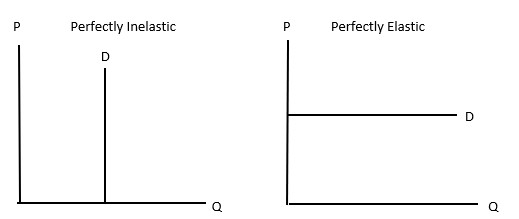Elasticity of supply shows how sensitive producers are to a change in price. The elasticity of supply is based on time limitations. Essentially, similar to how customers respond to price changes, producers need time to produce more.
- Elastic Supply:
- Producers are highly responsive to price changes.
- The supply curve is flatter.
- Typically applies in the long-run, as producers have more time to adjust
- For example, manufactured goods like cars or electronics.
- Inelastic Supply:
- Producers are less responsive to price changes.
- The supply curve is steeper.
- Common in the short-run, when production adjustments are limited.
- For example, agricultural goods (e.g., crops) during a growing season.
- Perfectly Inelastic Supply:
- Quantity supplied does not change, regardless of price.
- Represented by a vertical line.
- For example, fixed supply goods, like unique artworks or land in a specific location.
Perfectly inelastic is when the Q doesn’t change (vertical line) and perfectly elastic is a horizontal line. See:

Determinants of Elasticity of Supply
- Time Horizon:
- Short-Run: Supply is usually inelastic due to limited production flexibility.
- Long-Run: Supply becomes more elastic as firms can adjust resources and production.
- Flexibility of Production:
- Goods that can be produced quickly and cheaply are more elastic.
- For example, t-shirts vs. heavy machinery
- Availability of Inputs:
- Easy access to raw materials makes supply more elastic.
- For example, abundant wood supply allows quick production of furniture.
- Storage Capabilities:
- Goods that can be stored are more elastic since producers can respond to price changes by releasing inventory.
- For example, non-perishable goods like canned food.
See also: 1.5 — Cost-Benefit Analysis and 3.6 — Short-Run and Long-Run Decision-Making.